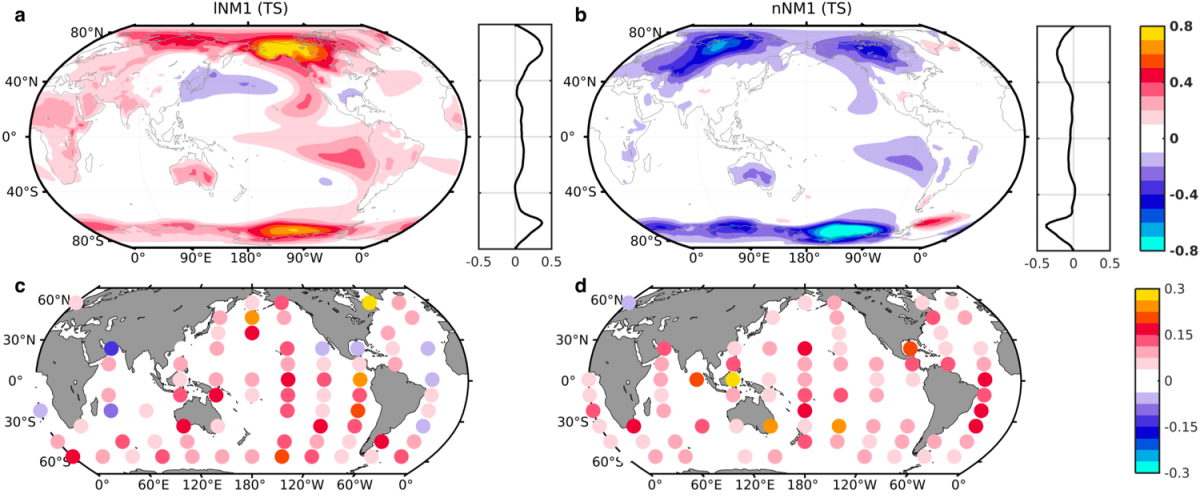Nonlinear mode of the climate response to external climate perturbations
Nonlinearity is often assumed to be small and negligible in climate response and climate feedback studies. Through examining the nonlinear response in a set of q-flux Green’s function experiments with an AGCM coupled to a slab, we found that a significant nonlinear component of surface temperature (TS) response with comparable magnitude to the linear counterpart. Further, the nonlinear pattern is characteristic of a polar-amplified global cooling, irrespective of the sign and location of the q-flux forcing, indicative strongly of an internal mode behavior to the climate system simulated by the AGCM. Accompanying the nonlinear TS pattern are a ubiquitous southward atmospheric heat transport across the equator and a northward shift of the ITCZ, with latter seemingly following the energetic constraint.
An attempt is made to estimate the effective response function of the nonlinear response to interrogate the nature of the common nonlinear global cooling pattern. It may be interpreted as the most excitable nonlinear mode forced by the variance of the linear response. The singular value analysis of the effective response function helps identify the region of the energy perturbation that the leading nonlinear mode is most sensitive to. The physical origin of the large nonlinearity is found to arise from the regime shift between a two-way coupled ocean-atmosphere system and a three-way coupled system involving ocean, sea ice, and atmosphere. Disabling sea ice formation and seasonal cycle in the slab-coupled AGCM eliminates the nonlinearity, epitomizing the importance of the sea ice of the polar system in shaping the global climate response to external perturbations.
An important corollary is that under a pair of opposite climate forcing (cooling and warming), the climate system we reside in has a propensity towards cooling rather than warming. In other words, the current climate we reside in is easier to cool than to warm.

